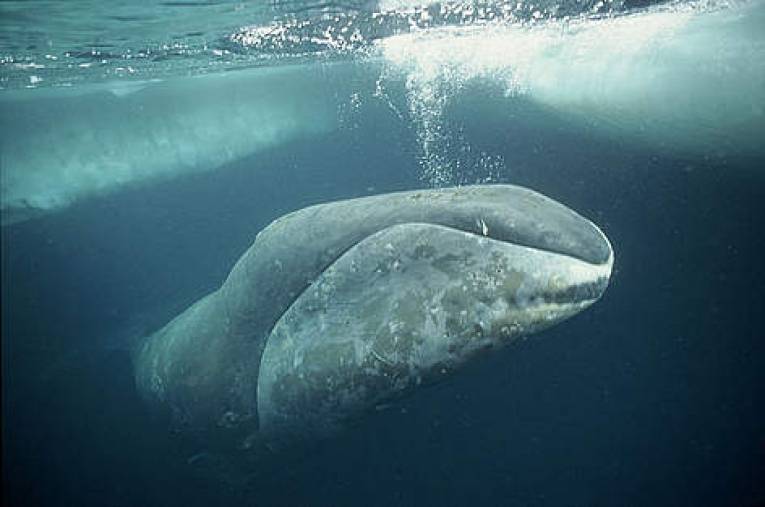When hydrophones are dipped in the Arctic waters in the deep and dark midwinter, the result is a complete surprise. As far as the bowhead whales are concerned, it’s a rock concert in the dark. Kathleen Stafford of the University of Washington and her Norwegian co-authors, C. Lydersen, Ã ˜. Wiig and K. M. Kovacs, of the University of Oslo and the Norwegian Polar Institute in Tromso, trolled off to Fram Strait in Spitsbergen (far north in the eastern Atlantic.) They provide us today with the first study of only the 2nd baleen whale found to sing songs. While humpbacks(Megaptera novaeangliae have almost made LPs (back in the day), the bowheads( Balaena mysticetus) have hardly been noticed. They sing of course in the middle of the Arctic winter, in complete darkness, but have now got 184 songs in the Spitsbergen charts!
The researchers have announced that extremely high song diversity exists both between the 3 years of study and also within each year from 2010 to 2014. The bowheads sang 24 hours per day for most of the winter with peaks in December/January. The different song types recorded numbered from 39 in 2010/2011 up to 76 in 2013/2014. They were popular for a few hours or a few days, and were then replaced, except for a precious few, which lasted all winter.
The importance of this study lies in comparisons. Mice and gibbons are very stereotyped and repetitive compared to this incredible variation. Only 2 song birds can outnumber these diverse arrangements. The bowheads (presumably the males) of this area have immigration from both the east, in the Bering Strait and the west, where a population exists between Canada and Greenland. 60% of the five populations are endangered. With little sea ice remaining in modern conditions, it’s convenient to assume the song types have migrated with the animals. What is possible is that with the bowhead as the only baleen whale within the High Arctic, interspecific ID is unnecessary. The reduces the selection pressure on maintaining a stereotype, meaning song novelty can explore any variation that attracts the girls. Whatever the explanation beneath the ice of cold polar nights, the distinctive songs will now be studied avidly. Whether you are a rock fan or a classical music aficionado, listen up - the Bowheads are coming.
More in the paper published as Extreme diversity in the songs of Spitsbergen’s bowhead whales
in the Biology Letters of the Royal Society. Our own little encyclopaedia entry, with the same pic but a video too, is at our site,










